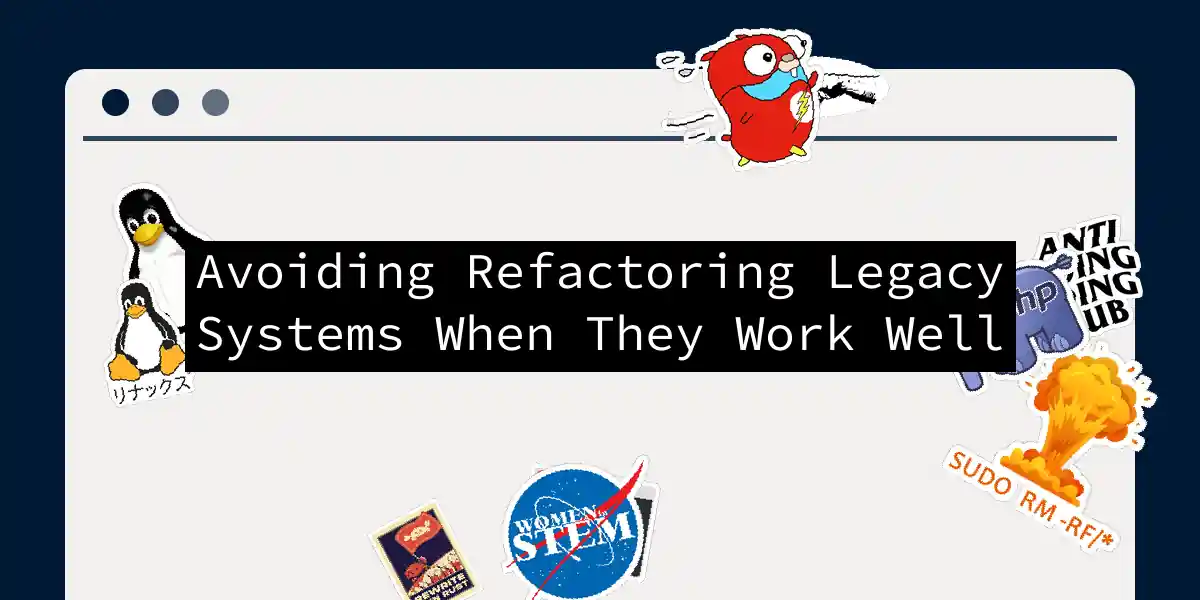The Dilemma of Legacy Systems: To Refactor or Not to Refactor?
In the world of software development, legacy systems are like the old, reliable cars that still get you from point A to point B, even if they don’t have all the fancy features of the latest models. While they may not be the most efficient or secure, they often continue to function well enough to keep the business running. But when is it wise to leave well enough alone, and when should you embark on the often-daunting task of refactoring?
Understanding Legacy Systems
Before we dive into the nitty-gritty, let’s define what we mean by “legacy systems.” These are older software systems that are still in use but may have been built using outdated technologies, frameworks, or coding practices. They can be cumbersome, difficult to maintain, and sometimes even hazardous to the health of your IT infrastructure.
The Allure of Refactoring
Refactoring is the process of restructuring existing code without changing its external behavior. It sounds like a magic pill: make the code cleaner, more organized, and easier to maintain, all while keeping the functionality intact. Here are some compelling reasons why developers often opt for refactoring:
Improved Performance
Refactoring can significantly improve the performance of your legacy system. Outdated software often comes with unpatched security flaws and compatibility issues that can be addressed through refactoring[2].
Easier Maintenance
Breaking down complex, monolithic code into smaller, manageable modules makes maintenance and troubleshooting much easier. It reduces technical debt and allows developers to adopt modern coding conventions[2].
Reduced Technical Debt
Technical debt, such as large methods, duplicated code, and outdated dependencies, can be mitigated through refactoring. This makes the codebase more maintainable and less prone to errors[2].
But What If It Ain’t Broke?
The age-old adage “if it ain’t broke, don’t fix it” has a lot of merit when it comes to legacy systems. Here are some reasons why you might want to avoid refactoring a system that is still working well:
Risk of Introducing New Bugs
Refactoring, no matter how careful you are, can introduce new bugs or change the behavior of the system in unintended ways. This can lead to user frustration and a loss of trust in your application[1].
Resource Intensive
Refactoring is a resource-intensive process that requires significant time, effort, and resources. It might divert attention away from other critical projects or new feature development.
Business Continuity
If the legacy system is critical to your business operations, any disruption caused by refactoring could have severe consequences. It’s crucial to prioritize stability and reliability over the desire to modernize.
When to Refactor and When to Leave Alone
So, how do you decide whether to refactor or leave your legacy system as is? Here are some key considerations:
Audit the System
Before making any decisions, perform a comprehensive audit of the system. Understand its architecture, code, and user experience. This will help you identify areas that are critical to business operations and those that are frequently modified[1][2][3].
Prioritize Business-Critical Components
Focus on refactoring components that are business-critical or frequently modified. This ensures that you address the most risky and impactful parts of the system first[5].
Incremental Changes
Instead of a massive overhaul, opt for incremental changes. This approach reduces the risk of introducing new bugs and allows for continuous improvement without disrupting the entire system[5].
Best Practices for Refactoring
If you do decide to refactor, here are some best practices to keep in mind:
Understand Your Codebase
Take the time to understand the existing code, its dependencies, and how different components interact. Visualize the system’s structure using diagrams and models[2][3].
Plan Your Refactoring
Create a clear roadmap for the refactoring process. Set measurable goals, rank modules based on their criticality and complexity, and outline phases, timelines, and deliverables[2].
Use Version Control
Ensure every change is documented and reversible using a version control system. This acts as a safety net during the refactoring process[2].
Validate in Staging
Never deploy refactored code directly to production. Use a staging environment to test and validate changes before they reach users[2].
Conclusion
Refactoring legacy systems can be a double-edged sword. While it offers numerous benefits in terms of performance, maintenance, and security, it also comes with significant risks and resource requirements. The key is to strike a balance between modernization and stability.
If your legacy system is working well and does not pose significant risks, it might be wise to leave it alone. However, if you do decide to refactor, make sure you follow best practices, prioritize critical components, and opt for incremental changes.
In the end, it’s all about making informed decisions that align with your business needs and ensuring that your software systems continue to serve you well, whether they are old or new. So, the next time you’re tempted to refactor that old but reliable system, remember: sometimes, it’s better to let sleeping dogs lie.
